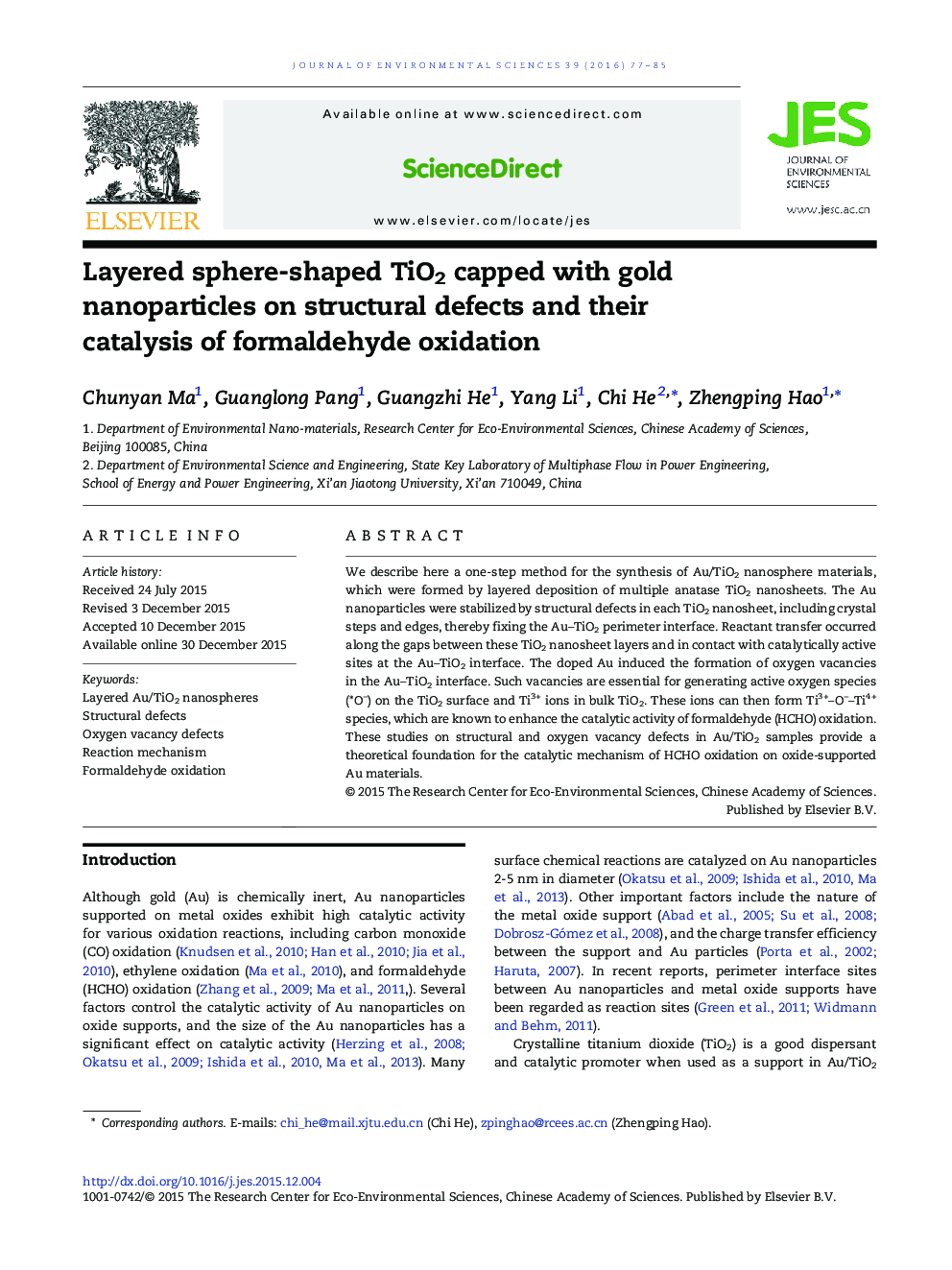| Article ID | Journal | Published Year | Pages | File Type |
|---|---|---|---|---|
| 4453872 | Journal of Environmental Sciences | 2016 | 9 Pages |
We describe here a one-step method for the synthesis of Au/TiO2 nanosphere materials, which were formed by layered deposition of multiple anatase TiO2 nanosheets. The Au nanoparticles were stabilized by structural defects in each TiO2 nanosheet, including crystal steps and edges, thereby fixing the Au–TiO2 perimeter interface. Reactant transfer occurred along the gaps between these TiO2 nanosheet layers and in contact with catalytically active sites at the Au–TiO2 interface. The doped Au induced the formation of oxygen vacancies in the Au–TiO2 interface. Such vacancies are essential for generating active oxygen species (*O−) on the TiO2 surface and Ti3 + ions in bulk TiO2. These ions can then form Ti3 +–O−–Ti4 + species, which are known to enhance the catalytic activity of formaldehyde (HCHO) oxidation. These studies on structural and oxygen vacancy defects in Au/TiO2 samples provide a theoretical foundation for the catalytic mechanism of HCHO oxidation on oxide-supported Au materials.
Graphical abstractThe Au nanoparticles were stabilized by structural defects, including crystal steps and edges, in each TiO2 nanosheet, thereby fixing the Au–TiO2 perimeter interface. Reactant and product transfer occurred along the gaps between these TiO2 nanosheet layers and contact with catalytically active sites on the Au–TiO2 interface.Figure optionsDownload full-size imageDownload as PowerPoint slide
